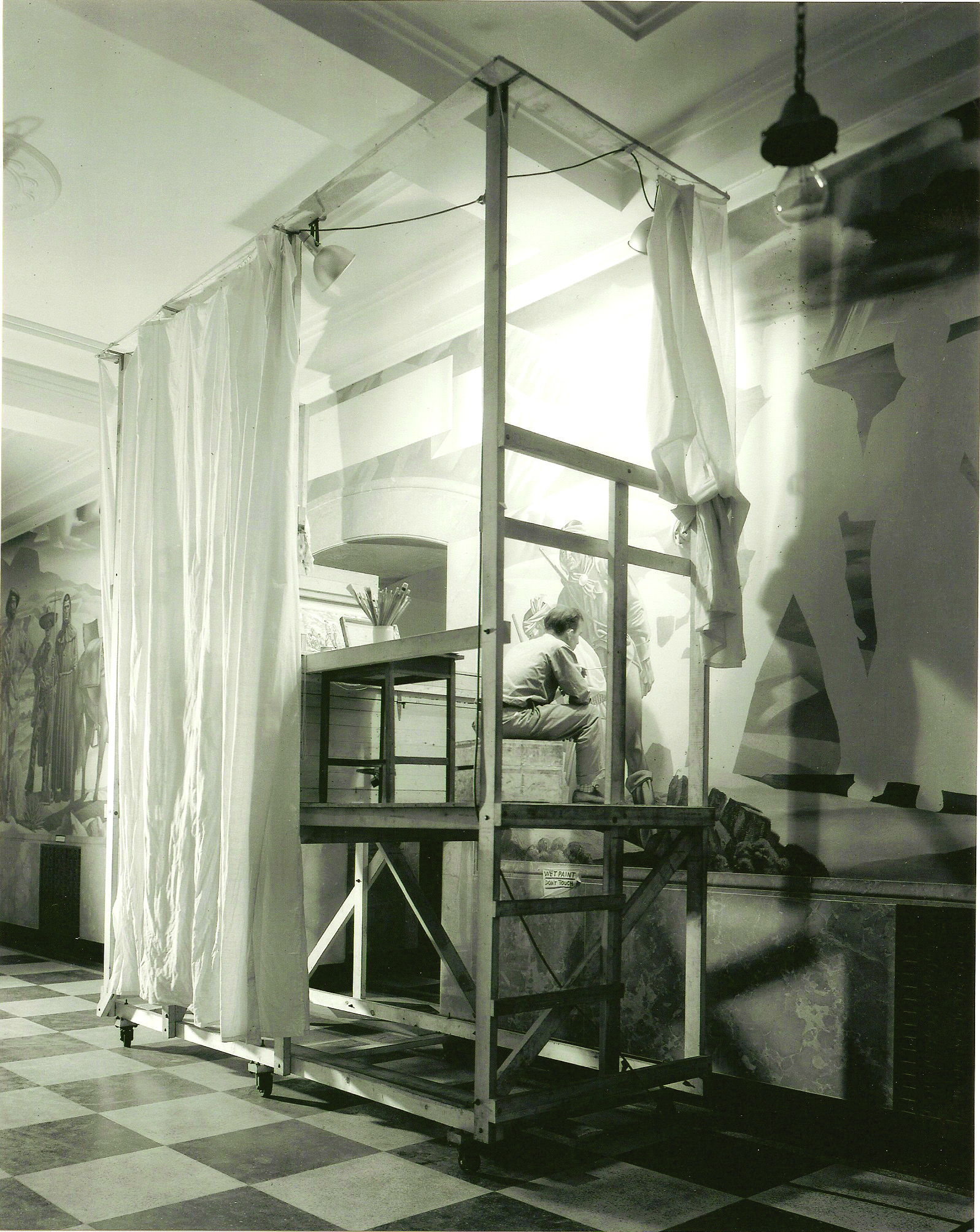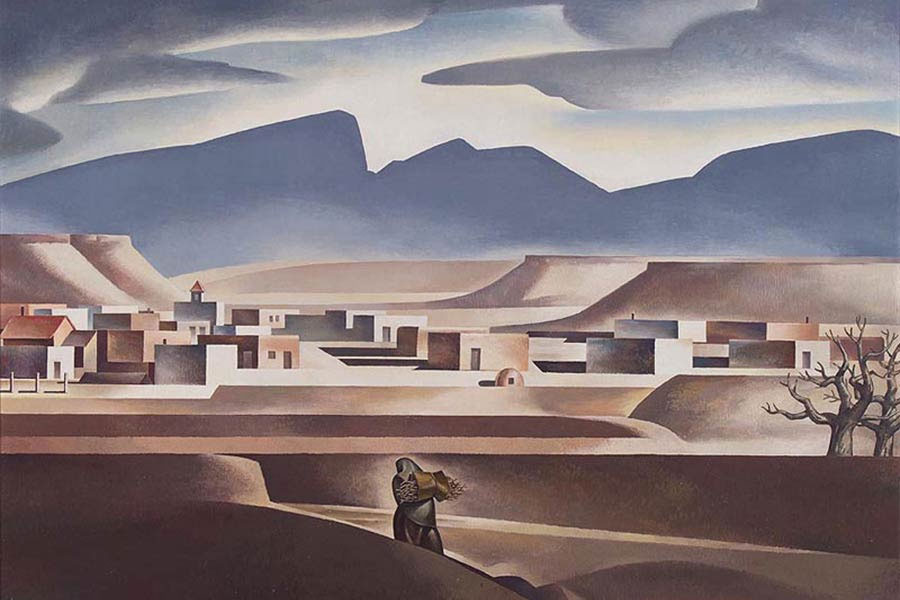First major exhibition of works by Texas artist Tom Lea opens Aug. 22 at the Bullock Museum
Works of art and writings document 20th-century America
AUGUST 18, 2015 (AUSTIN, TX) — The Bullock Texas State History Museum's new exhibition, "Tom Lea: Chronicler of 20th Century America," opens Aug. 22, 2015 and features paintings, illustrations, and writings that celebrate Lea's career. As a quintessential chronicler of the 20th-century United States, El Paso native Tom Lea (1907-2001) depicted both the hauntingly beautiful Southwest and the international conflict experienced firsthand while serving as an artist-correspondent during World War II.
This is the first comprehensive exhibition of the artist’s work, presenting illustrations, paintings, writings, and full-scale prints of murals within the historical context that shaped them.
"Lea's work is both art and artifact of history, capturing the events, concerns, and tenor of 20th-century life," Bullock Museum Director Dr. Victoria Ramirez said. "It's befitting that the most comprehensive exhibition of Lea's work would be on view at the Bullock Museum."
The exhibition brings together original works on loan from private collections and museums throughout the country and provides insight into the history Lea's artworks reflect. Lea's work is highly personal and human — exploring his own life and depicting the lives of 20th-century Americans, from the struggles of the Great Depression to those serving abroad in the military. In addition to completing commissioned works as part of the New Deal, Lea's work was featured in "The Saturday Evening Post," "Life" magazine, and in Hollywood films.
The son of the City of El Paso’s mayor during the Mexican Revolution, Lea’s young life was enriched by a vivid introduction to the Southwest. He attended the Art Institute of Chicago from 1924-26, and in the 1930s and 40s was a commercial artist and muralist with commissioned jobs across the U.S. from Santa Fe to Washington, D.C. Through the Fine Arts Section of the U.S. Treasury Department, he created murals that expressed the vibrant culture of the Southwest, including "The Nesters" (1936) in Washington, D.C., "Pass of the North" (1938) in El Paso, and "Stampede" (1940) in Odessa, Texas.
During WWII, Lea traveled with the 1st Marine Division as a reporter for "Life" magazine, covering the European and Pacific theaters of war. His iconic paintings of Marines on Peleliu became some of the most recognized war paintings in the world. Lea depicted a battle-fatigued soldier in a sketch for "Life" that will be featured in the exhibition, "Down From Bloody Nose Too Late." This sketch served as the basis of the famous painting, "That 2,000 Yard Stare" (1944). "…How much can a human being endure?" Lea wrote of the soldier, who was wounded, suffering illness, and had lost two-thirds of his company.
After the war, Lea increasingly focused on portraiture, Southwestern landscapes, and writing. He authored bestselling Western novels and other works of fiction devoted to Texas and the West. Two of his novels, "The Brave Bulls" and "The Wonderful Country," became successful Hollywood films.
During this time, he created his self-proclaimed magnum opus, “Sarah in the Summertime” (oil on canvas, 69'h x 28'w, 1947), a larger-than-life portrait of his second wife, Sarah Dighton. Following his return home from the war, Lea began the portrait based on a snapshot that he carried in his wallet while he was away. Painted with devotion and without haste, the painting took almost two years to complete. Towering at nearly six feet tall, the portrait was “…a painter’s votive offering mad in the gladness of being home," Lea said.
"'Sarah in the Summertime' is a gorgeously striking painting that exemplifies Lea's skill as an artist," Ramirez said. "His loving and approachable depiction of his wife provides a glimpse into Lea's own life and the lives of thousands who served overseas."
Over 40 original artworks, artifacts, and large-scale prints will be on view at the Bullock Museum, providing a rare opportunity for a wider audience to view his legacy and this exceptional window on 20th-century American life. The 2,000-sq.-ft. exhibition’s interpretative voice is that of Lea himself based on an oral history produced in 1995. Large-scale graphics depicting murals that still hang in state and federal buildings provide a backdrop for the paintings and manuscripts on view at the museum.
Downloads
The Bullock Texas State History Museum, a division of the State Preservation Board and an accredited institution of the American Alliance of Museums, creates experiences that educate, engage, and encourage a deeper understanding of Texas. With dynamic, award-winning exhibitions that illuminate Texas history, people, and culture, educational programming for all ages, and an IMAX® theater with a screen the size of Texas, the Museum collaborates with more than 700 museums, libraries, archives, organizations, and individuals across the world to bring the Story of Texas to life. For more information, visit www.TheStoryofTexas.com
Media Contact
| General Inquiries | |
|---|---|
| 512-463-5424 | |

